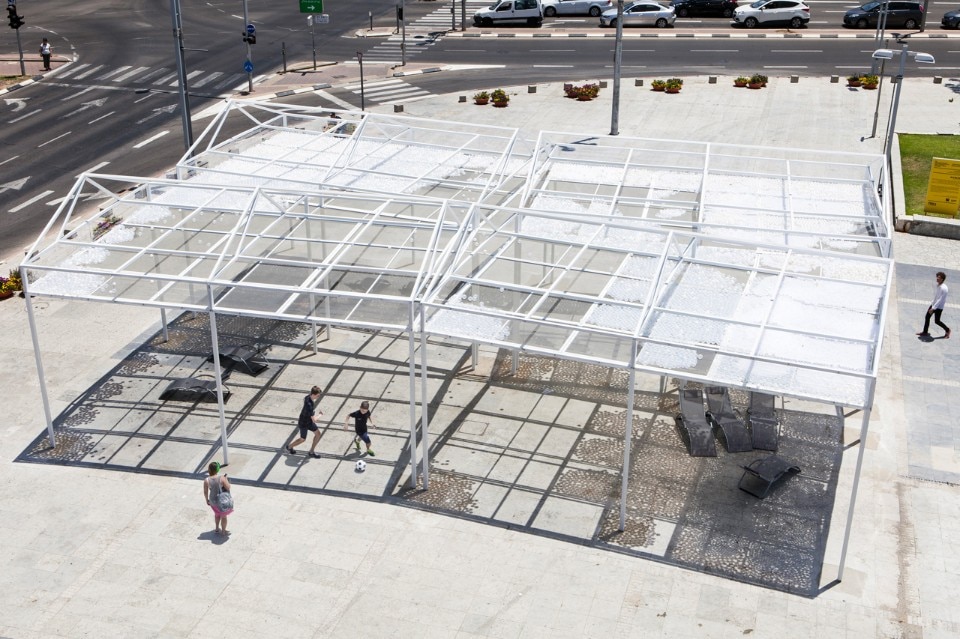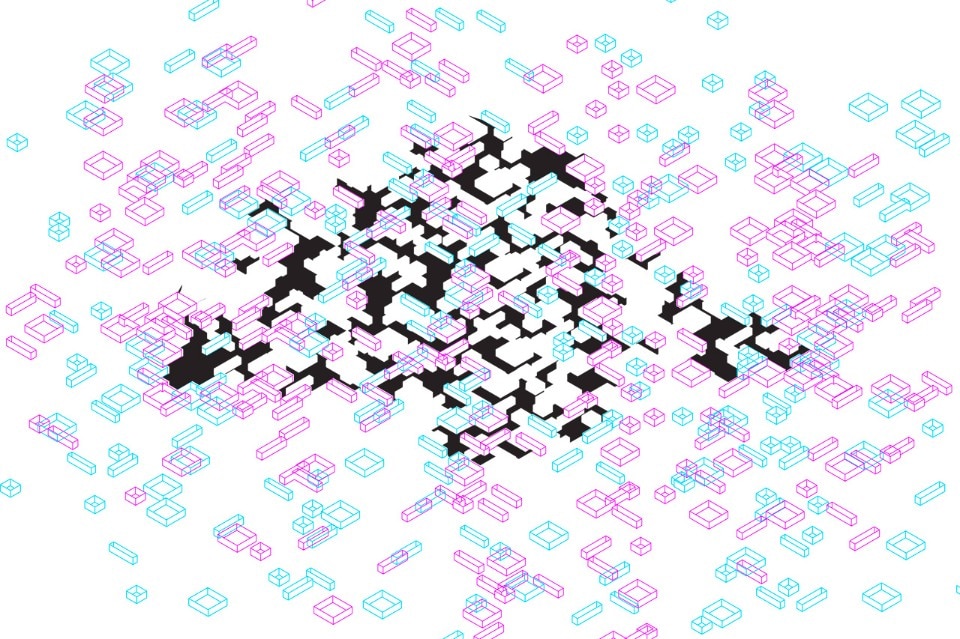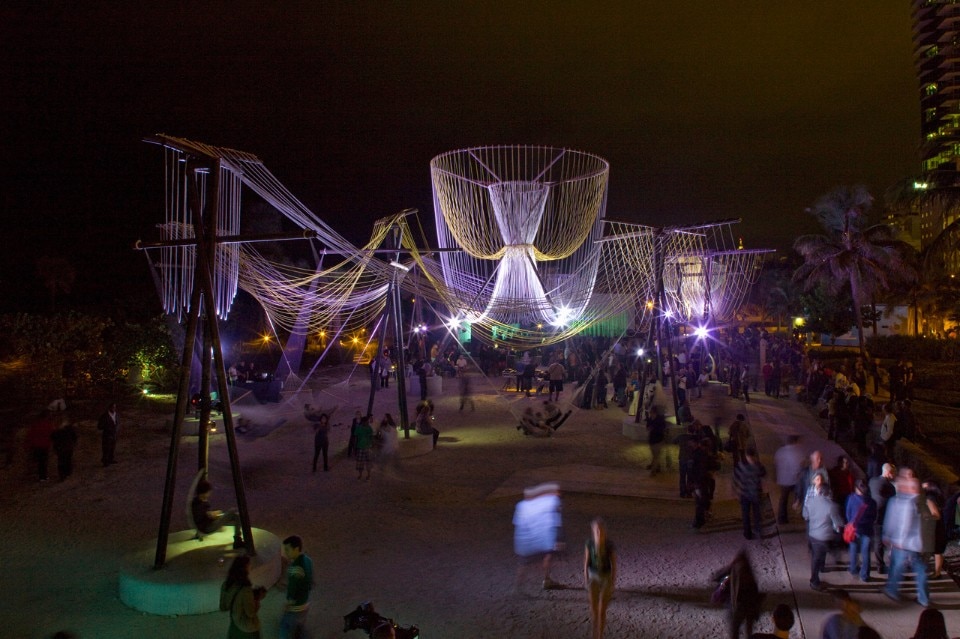Maria Luisa Palumbo: I think we could start with your present research at the American Academy, can you tell me about it? Is there a connection between ruins, un-finished projects and weather?
Phu Hoang, Rachely Rotem: Our work explores boundaries between architecture and weather in the public realm. The Founders Rome Prize fellowship, as well as our experience living in Rome, allows us to explore our ideas about public engagement with the environment. One aspect of our work explores the relationships of thermodynamics and social dynamics in the public realm. We are interested in how the design of thermodynamic urban spaces can activate social interaction, especially in groups.
We are currently rethinking Rome’s piazzas (plazas) as thermodynamic public spaces. While their architectural characteristics are fixed, they are extremely varied in terms of their thermodynamic character – throughout a day, during a season, and between seasons. The piazza is a site of thermodynamic exchange between thermal sources and sinks. We are interested in how this exchange can prompt new kinds of social behaviour. In the current winter season, Rome’s cooler weather and its low sun angle make people cluster into groups seeking solar radiation. These groups are made of strangers who do not know each other but are close enough together to be perceived as a unit: spontaneous social dynamics prompted by thermodynamics.
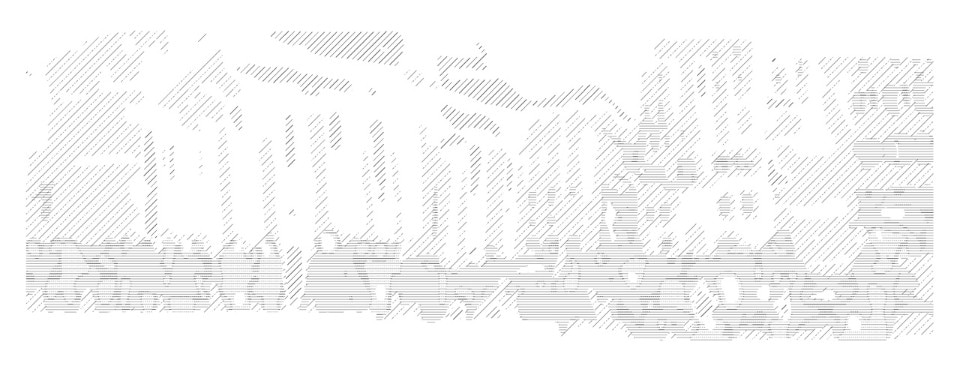
Another aspect of our Rome Prize work is our research of incomplete projects in Italy. Italy has over six hundred such projects, with some originating thirty years ago. They represent the contemporary ruins of the country. There is even a ministry department responsible for this legacy of incomplete work! Rather than view these projects as moments of failure, we reconceive their incomplete state as open-air weather laboratories. It is in these incomplete spaces that weather and architecture mutates; architecture adapts to weather and changes over time with climate.
We recently visited the site of Santiago Calatrava’s Città dello Sport – a massive, incomplete natatorium complex in Rome whose construction was halted six years ago. The architecture of the complex allows weather to enter and mutate its spaces. These contemporary ruins raise interesting questions about the idea of completion itself. Does architecture need to be fully enclosed – or “completed” – and can some areas of a building allow for varied, differentiated, mediated, and adaptive relationships to weather? In our unstable societies of change – in climate, programs, and even sites –when is a project ever “complete”? Can designing for the incomplete become a final architectural act?
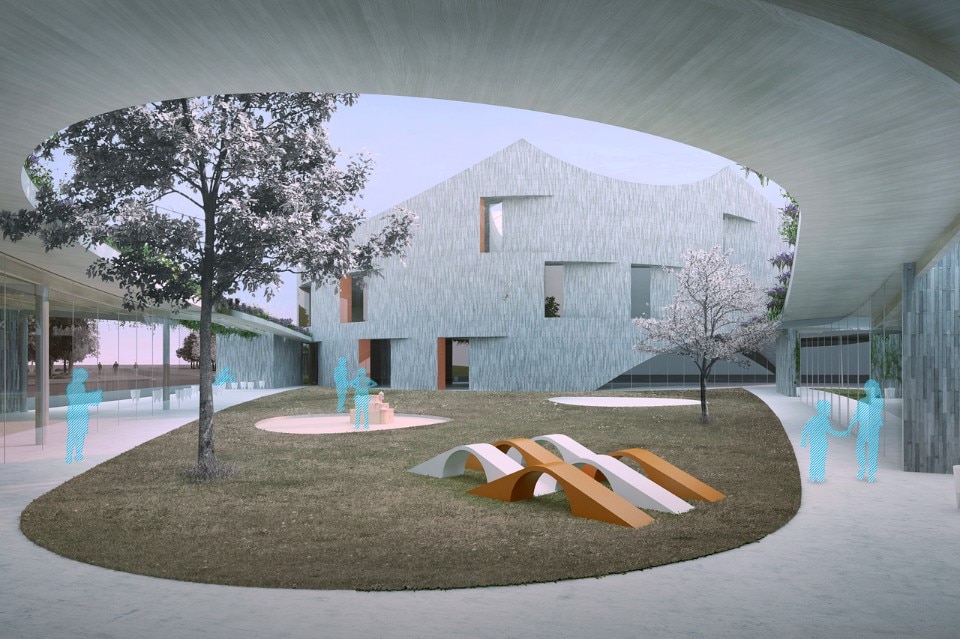
Maria Luisa Palumbo: In your book Weather in Climate: Schools you make a distinction between weather and climate arguing that there is a temporal distance between the two, which makes weather an objective and measurable phenomena, and climate a more political notion...
Phu Hoang, Rachely Rotem: Weather is immediate and personally “experienced,” leading to a belief that it is undeniable. Climate, on the other hand, does not appear to occur “right now”; invisible to the naked eye, it is only made knowable by statistics and computational models. Thus it seems to be susceptible to easy politicization, given our polarized political sphere. While it is true that the basic difference between weather and climate is time-based – weather occurs now, while climate is years, decades, or even millennia long – this difference is not what separates them but instead what makes their interdependence possible. One way to understand this temporal relationship is through the distinction between meteorology, which is the study of conditions occurring in the atmosphere, and climatology, which is the study of everything that affects the atmosphere. It is impossible to believe in the science of meteorology without acknowledging the core principles of climatology.
Maria Luisa Palumbo: MODU is a LEED accredited architectural practice. Do you think “certification” is useful to push a more sustainable approach to architecture, between architects, developers, people and administrations? And how do you see the road to a more sustainable way to inhabit the planet?
Phu Hoang, Rachely Rotem: We are a LEED accredited practice because it is important to adopt a multi-layered strategy to design environmentally. However, we are also critical of current environmental building standards – namely that they risk oversimplifying environmental thinking into a checklist of applied high-tech solutions. An over-reliance on sustainable technologies represents a missed opportunity for architects to use the discipline’s conceptual methods to radically reconceive architecture and the public’s relationship to the environment.
Our sense of a way forward involves raising awareness of new relationships between architecture and weather. The everyday experience of weather is what makes it possible to alter the public’s perception. If architecture were adaptable and modified by weather, there would not only be significant reductions in building energy usage but there would also be the possibility of creating sensorial experiences. Architecture should not simply separate from weather, but should transform it into new kinds of thermally active spaces. Architects, planners, and engineers need to practice the active design of environments and programs that mediate, rather than separate from, weather.
Maria Luisa Palumbo: Talking about technology, how important is our digital technology to connect people to their environments?
Phu Hoang, Rachely Rotem: Technology is important to us when it is socially enabling. The development of new technology both emerges from and is transformed by societies. We use digital technologies to reconnect to the physical world through our architecture. Our Weather (Un)Control project, which occurred on the one-year anniversary of Hurricane Sandy in New York City, used a static electricity-generating plotter to create wall-sized drawings from the interaction of static electricity and artificial dust. We worked with a robotics engineer to create large dust drawings that visualized the immaterial contaminants that still remained in the indoor air of hurricane-damaged homes.
Digital technologies have produced an unprecedented amount of data. Within the design disciplines, the complexity of understanding this data has typically fallen under the rubric of “data visualization.” One of our projects at the American Academy in Rome involves working with Christoph Meinrenken, a physicist from Columbia University’s Earth Institute, who specializes in creating climate models. We are collaborating to translate climate data into sensorial atmospheres in architecture that go beyond simply visualizing the data. This cross-disciplinary project is exciting to us, as it requires a new conceptual framework to understand climate data in terms of senses beyond the visual.
Maria Luisa Palumbo: Describing your “Cloud Seeding” pavilion you wrote that design can do more than fulfill a public need, it can foster engaging public experiences. Can you tell me how this project establishes your thinking about working in the public realm?
Phu Hoang, Rachely Rotem: The definition of the commons – shared natural resources available to the public – was important to the design of our Cloud Seeding plaza pavilion. In the public plaza of Design Museum Holon, Israel’s national design museum, the pavilion interrelates weather-based atmospheres with sensorial atmospheres experienced by the public. The plaza ceiling supports 30,000 balls that move freely with the wind across its surface. This overhead movement allows public events to occur in dynamic shade areas of the pavilion, connecting its cultural and leisure programs to the invisible forces of weather.
Working in the public realm involves inviting the public to engage with architecture. The wind microclimates in the museum’s plaza are given physical form as the moving ceiling of balls captivates its visitors. We do not design for fixed outcomes, but allow for projects to be partially incomplete so that they are only “completed” when the weather and public interact. We call these “participatory environments,” as they are both environmentally and socially dynamic while also providing different experiences on each new visit.

